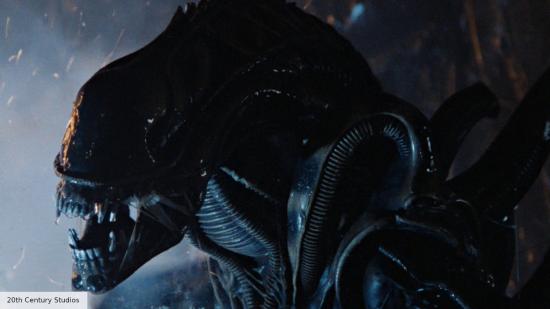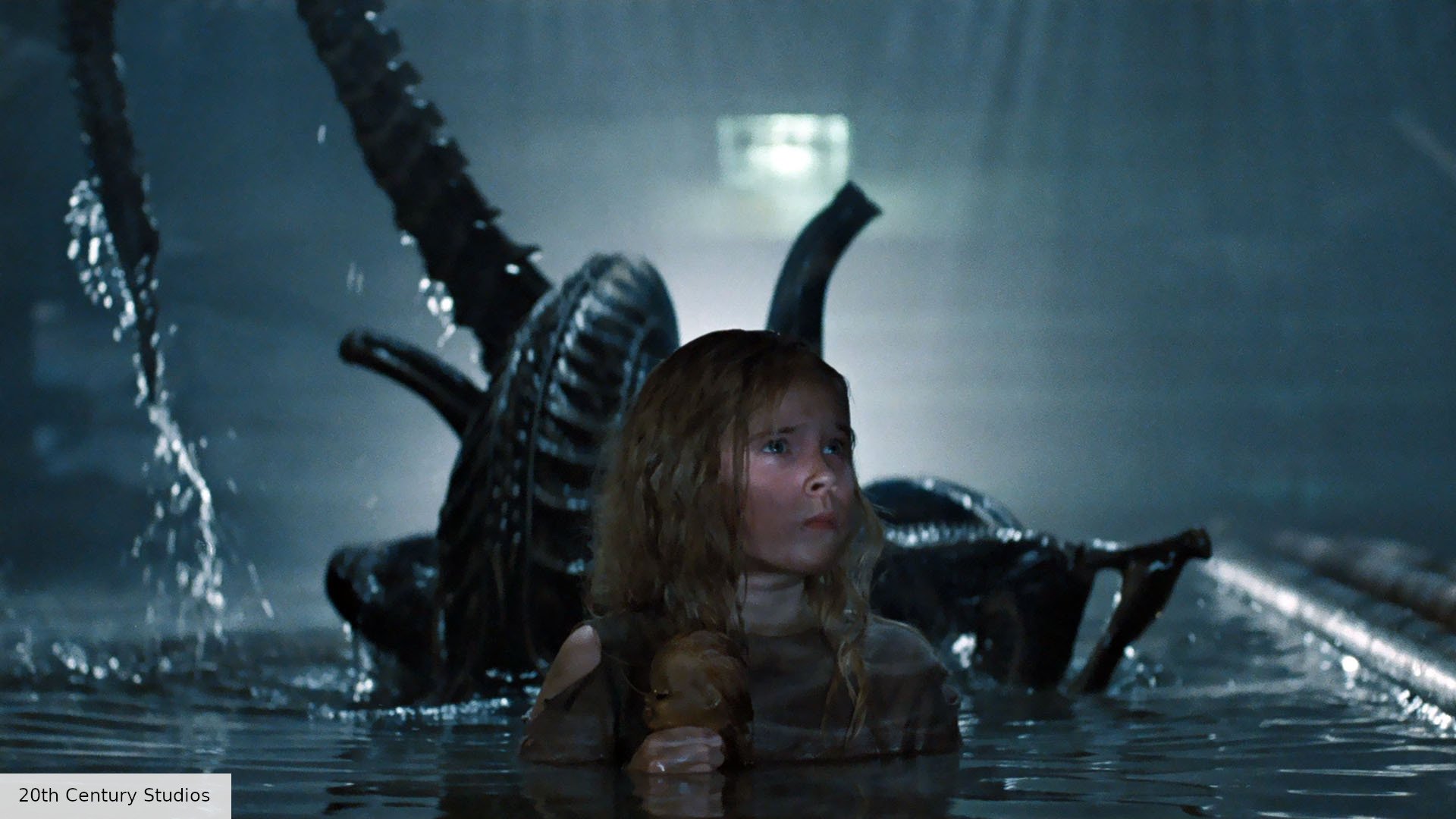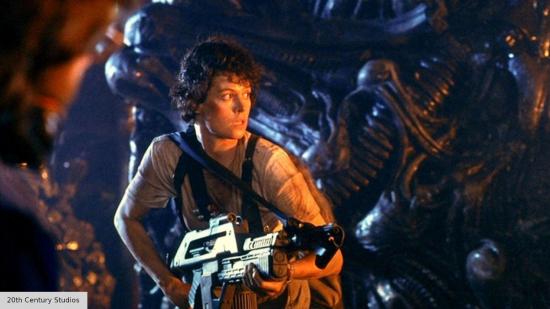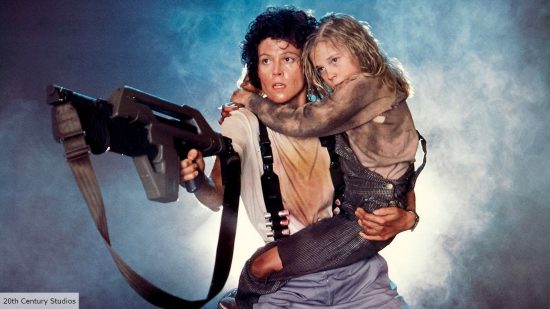Our Verdict
Aliens may be an express elevator to hell, but we really don't want to get off it.
Decades later, the thing that continues to fascinate me about Aliens is that it simply should not work. Taking Ridley Scott’s inky-black, atmospheric 1979 masterpiece, one of the best horror movies ever made, and stripping it for parts to make a ‘hoorah!’ epic is ridiculous. Gutting the story of a perfect organism hunting the Nostromo’s crew and saying, ‘Yeah, but what if there were, like, two hundred of ’em and we added an ‘S’ to the title?’ is not a solid on-paper choice.
And yet James Cameron achieved the impossible in 1986, with a newly skinned, macho, action-forward sequel that may not quite be an Alien movie, but definitely is an Ellen Ripley one.
Aliens picks up decades after Ripley went into hypersleep, with the former flight officer waking to capitalism running amuck in Waycorp’s colonising of worlds and to news her daughter (this is in the extended cut, reissued for Alien Day 2023) lived without her and died peacefully in her sleep.
As for whether the additions in this cut add or detract, that’s up to each fan, but this does add a layer to the Newt and Ripley dynamic to come once the latter is convinced by company man Burke to revisit LV-426 – the planet hosting the derelict Xenomorph ship, now occupied by families.

When we meet a dude-bro squad of “ultimate badasses” hired to investigate why those colonists have ceased contact, Cameron’s uniquely brave qualities as a director begin to shine through. Armoured chest plates are spray painted and decorated with little padlocks and trinkets, each soldier has an immediately available personality, and Ripley looks on in disdain as they crudely joke and pump themselves up.
This environment is out of sync with what Scott conceptualised for Alien. Cameron’s confident striking out can feel jarring on a first watch but is an entertaining quirk from there on out, serving to position Ripley as a capable leader through juxtaposition.
When they find cocooned colonists, Bill Paxton’s chest-puffing Hudson deteriorates when things go south, the quieter Hicks catches Ripley’s eye (there’s nothing sexier than a stand-up guy), and Cameron introduces a manic intensity that feasts upon the characters’ shot nerves.
Aliens’ pace is another distinction from the original. While Alien was slow and deliberate, creating patient scares, Aliens is pedal to the metal insanity. Nothing speaks to this more than the famous turret scene, which sees the sweaty, strung-out survivors watch their defence systems fire relentlessly on waves of attacking Xenomorphs, the bullet count on their monitor tumbling towards zero.

This scene is an example of how Cameron changes the aliens, for better and for worse. In the original, the titular creature has a singular mind. It’s a predator, hunting with an inherent hostility – there’s no purpose other than winning; by the climax, it’s as if Ripley is locking horns with it, and there’s a determination that pokes through the mindless killings. In Aliens, the creatures are more animalistic, with Hudson making reference to ants and bees working together to reproduce and maintain their own colonies.
The volume of Xenomorphs and the introduction of a queen reduce the fright factor, they’re like drones. But, what’s lost in horror pays dividends in action. Ultimately, what may split the difference as to which movie takes the cake is the viewer’s loyalty to their favoured genre.
To say Aliens is lacking tension would be incorrect, however. It’s just crystallised by ear-piercing sound and panicked, breathless frenzy rather than chilly one-on-one encounters.
Working hard in the movie’s corner are its practical effects and tangible sets. The use of miniatures and the set design have been preserved beautifully, with many shots looking a hell of a lot more lived-in than most of what we see from blockbusters today.

The practical and special effects are inspired, creating misty vistas and a queasy rocking sensation in vehicles and ships, and while the bio-mechanical art design stands out more in the previous movie, the aliens look great and the Queen is awesome.
The sound design is exceptional, with clicky triggers, clanking metal, and plastic-sounding armour plates creating a tactile experience that envelopes you in the setting.
All of that is very technical and great, but Cameron is a known softy (despite his reputation) when it comes to storytelling, and Aliens’ framing of motherhood as a strength instead of a weakness, not common for movies of the time, is refreshing and powerful. Hudson may joke about being on an “express elevator to hell” when they land on LV-426, but Ripley really takes one down to the Queen’s layer to save Newt.
There was nothing wrong with Ripley in Alien, it instantly cemented her as one of the best female characters of all time, but Aliens prioritises her with a distinct character arc. The 80s were revolutionary for action heroines in cinema, and you can’t have that discussion without mentioning Sigourney Weaver.

While we can’t broadly recommend filmmakers establish an entirely different tone for sequels to movies they had no authorship in, sometimes you have the ingredients to make it work. Aliens doesn’t just work, it sings.
For more, check out the Alien timeline, the new movies coming soon, and the best movies of all time. Or, discover the other best alien movies.
